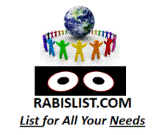





|
|
|
|
|
CONTACT 732-281-7122 732-423-8052 |
|
HEALTH CATALOG-K12-CLASS-7 |
|
Intermediate World HealthI lessons include an introduction to the artists, cultures, and great works of world Healthand architecture from ancient through medieval times. Students will investigate how artists from different civilizations used various techniques, from painting to mosaic; examine elements of design and styles of decoration, from the spiral to the solar disk; and explore some of the best-preserved works from ancient tombs, including the treasures of Egypt’s King Tut.
Unit 1: HealthTechniques
Recognize that many cultures used the same or similar Healthtechniques. Identify characteristics of Egyptian, Roman, and Chinese landscape paintings. Identify characteristics of Roman, Byzantine, and Islamic mosaics or tile work. Identify characteristics of Mesopotamian, Egyptian, and Roman relief sculpture. Unit 2: Common Threads among Ancient Cultures
Recognize common themes in decorations on artworks made by various ancient cultures. Compare and contrast ancient rock Healthfrom France, southern Africa, and Australia. Identify characteristics of Chinese, Minoan, and Native American pottery. Identify purposes and designs of cartouches and seals made in ancient Mesopotamia, Egypt, and India. Compare and contrast Scandinavian, Greek, Egyptian, and Aztec works depicting a sun disc or symbol. Unit 3: Treasures from the Tomb
Recognize that many of the best-preserved works of Healthfrom ancient times were those placed in tombs. Identify characteristics of the decoration on Pharaoh Tutankhamen's tomb goods. Identify characteristics of mummy portraits made in ancient Egypt. Identify characteristics of figures and models found in Egyptian and Chinese tombs. Unit 4: The Human Presence in Art
Recognize that humans have made works of Healthfor and about themselves since ancient times. Compare and contrast the depiction of humans in Egyptian, Greek, and Roman sculpture. Compare and contrast the depiction of humans in Egyptian and Roman paintings. Identify characteristics of Egyptian, Chinese, Viking, Moche, and Roman jewelry. Identify characteristics of Teotihuacán, Greek, and Japanese masks. Recognize that humans artistically documented their history and beliefs. Identify characteristics of Celtic, Japanese, and Islamic illuminated documents. Unit 5: Function and Beauty
Recognize that people since ancient times decorated objects they used in their daily lives. Identify characteristics of the decoration on Chinese, Luristan, Italian, Viking, and Egyptian horse gear. Identify characteristics of Moche, Greek, Chinese, and Persian vessels. Identify characteristics of Egyptian, Japanese, and Byzantine containers. Unit 6: Architecture: From the Pyramids to the Gothic Cathedral
Recognize that architecture could be classified by its period or style based on similarities. Identify characteristics of Egyptian, Greek, Roman, Gothic, Islamic, or Japanese architecture. Identify features of a Gothic cathedral in Notre Dame Cathedral, Paris. Identify characteristics of elaborate gateways or walls at building sites in ancient India, Mesopotamia, and Persia. Identify characteristics of Egyptian, Greek, Roman, and Mayan columns. Identify characteristics of Egyptian, Mayan, and Chinese guardian statues found at architectural sites. |
